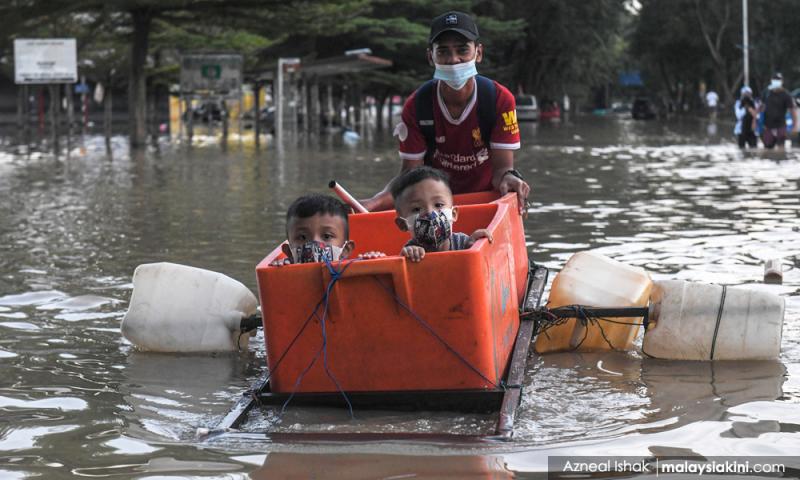COMMENT | No excuse for poorly coordinated disaster management
COMMENT | The recent flood has shown how the government is more concerned about post-disaster relief than pre-disaster preparedness and delivery. The slew of relief efforts is a good thing, but it is also the “easiest” part of the entire ordeal.
Why were the authorities seemingly unprepared despite early warnings?
Nearly a month ago, the Irrigation and Drainage Department (DID) reportedly warned that certain parts of Malaysia could face flash floods due to the heavy rainfall from the northeast monsoon. The DID director-general Nor Hisham Mohd Ghazali also reportedly pointed to more frequent floods in recent years, particularly in areas of rapid urbanisation.
Responding to public criticisms, the Meteorological Department (MetMalaysia) claimed that warnings of continuous rainfall that resulted in massive floods and landslides nationwide have been made since Dec 11 and that the department released an advisory early morning of Dec 17 when Typhoon Rai reached the country’s monitoring areas.
When monitoring by MetMalaysia and DID detects rain and river water levels above critical, flood operation centres would have been notified, triggering disaster management operations at the national and state levels.
Had the authorities mobilised manpower, assets, and disaster relief centres - even as late as within the 24 hours of MetMalaysia’s same-day advisory - they could have reduced impacts of the flood, and people could have been evacuated earlier.
In fact, Malaysia even has a disaster management document called 'Malaysia: Disaster Management Reference Handbook', which also states that “some of the worst floods in the past 30 years have occurred since...
RM12.50 / month
- Unlimited access to award-winning journalism
- Comment and share your opinions on all our articles
- Gift interesting stories to your friends
- Tax deductable

 Rais Hussin
Rais Hussin